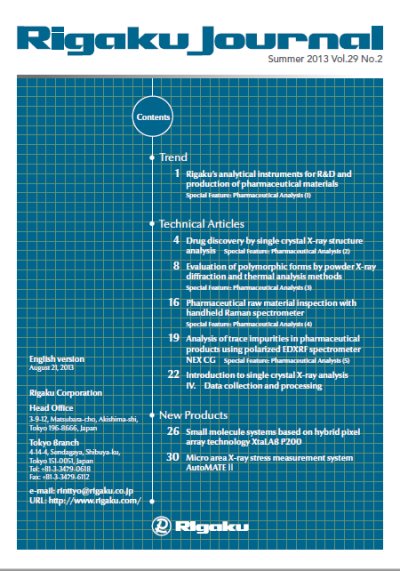In the early stages of new drug discovery, the structure of small molecule hits resulting from compound screening is modified to derive leads (putative drug molecules) and then the leads are optimized intensely to achieve a molecule with a higher affinity to the target protein. The atomic resolution protein structure indispensable to this optimization step is determined by X-ray crystallography. The structure of the lead itself including its absolute configuration is also important because optical isomers often have completely different effects on living organisms. Single crystal structure analysis is essentially the sole method for determining the absolute structure of a molecule.
The principle of single crystal analysis is quite simple and common in both small molecule and macromolecule crystallography. When a single crystal is irradiated with X-rays, they bounce off the electrons and interact to produce a set of diffraction spots, which researchers transform Fourier analysis to obtain the electron density inside the crystal. By assuming atoms reside at electron density peak positions, one can reconstruct the molecule. Experimental methods such as multiple isomorphous replacement method (MIR) provide phases necessary to calculate a Fourier transform in the case of macromolecule crystals. When a structure highly homologous to the target molecule is known, the phasing process becomes much simpler because the molecular replacement method can be used. This is the often the case with single crystal analysis as used in drug development.

